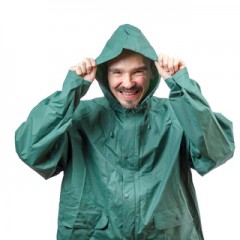The current standard EN 343 for rainwear for professional use dates from 2007. CEN/TC 162/WG 4 is now working on a successor. The market already has many years of experience with the current standard and there are still a few objections regarding the usefulness of some of the requirements and test methods in this standard.
The fact that rainwear under the PPE Regulation (EU) 2016/425 falls in category I for which no assessment by a Notified Body is needed, makes the reality of the classes of offered products sometimes doubtful.
Surely, experts from WG 4 are aware of this situation. It is therefore surprising to find that experts opt for an extension of classes. The proposal that is circulating now, a class 4 is introduced for both resistance to water penetration and water vapour resistance.
Resistance to water penetration
Class 1, 2 and 3 are identical to the current standard. Class 4 represents a resistance to water penetration of more than 2 meters of both the material and the seams after cleaning.
Water vapour resistance (Ret)
Here, too, a class 4 is allowed in which the Ret-value is not more than 10 m²⋅Pa/W. For lined parkas and coats an almost impossible objective because the water vapour resistance should be measured across all layers together. For single-layer clothing, a class 4 could be achievable.
However, fact is that a higher class looks better although a comfortable parka in practice is bounded to a lower class due to its multi layer nature.
Rain test
Also new is the option to include the 'rain proofness' as one of the performance indicators. This is tested in a 'rain tower' according to EN 14360 in which, among others, the wicking through seams is been evaluated.
The question that arises is whether this test can not replace the water resistance test in its entirety. After all, it is a test to evaluate the performance of rain garments under practical and realistic conditions and, an additional advantage is that it can reduce test costs.
Although, at the moment it is just a draft standard (working document) within WG 4 where further negotiations are needed. We hope that CEN will find a better understanding of the practice of use and specifications of rainwear and will come up with a better and less complicating proposal.
